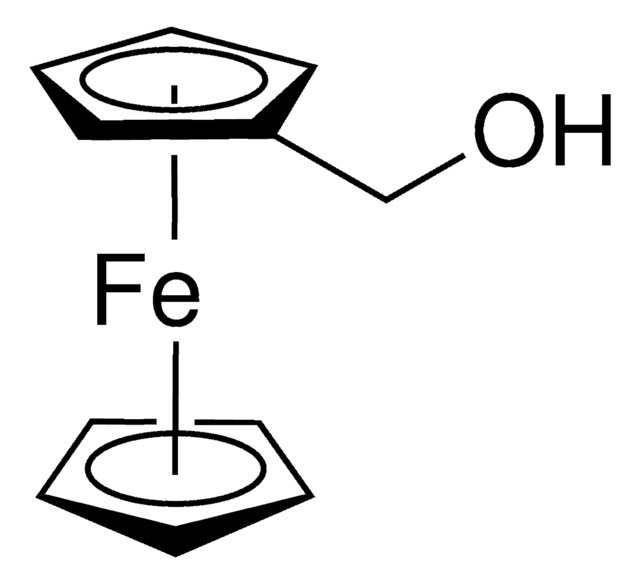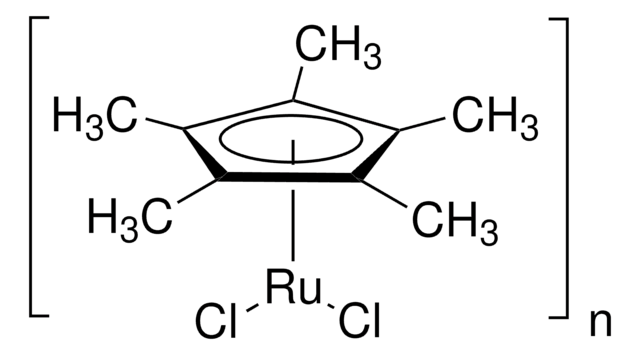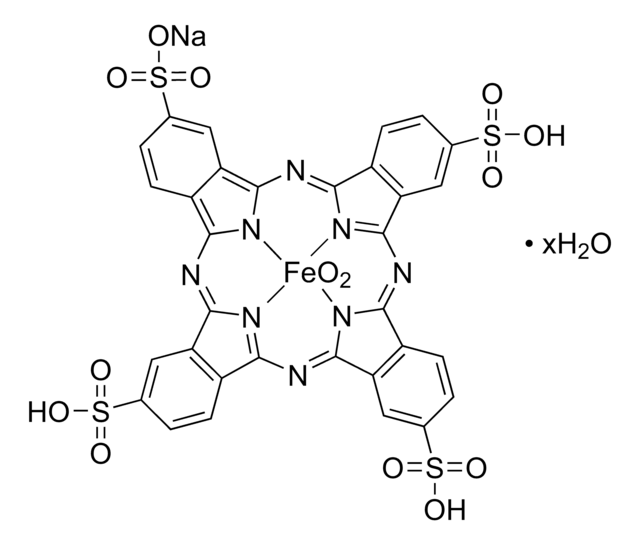303690
Hexaammineruthenium(II) chloride
99.9% trace metals basis
Sinónimos:
Ruthenium(III) chloride hexaammoniate
About This Item
Productos recomendados
Nivel de calidad
Ensayo
99.9% trace metals basis
Formulario
solid
idoneidad de la reacción
reagent type: catalyst
core: ruthenium
impurezas
≤1500.0 ppm Trace Metal Analysis
solubilidad
H2O: slightly soluble(lit.)
temp. de almacenamiento
2-8°C
cadena SMILES
N.N.N.N.N.N.[Cl-].[Cl-].[Ru++]
InChI
1S/2ClH.6H3N.Ru/h2*1H;6*1H3;/q;;;;;;;;+2/p-2
Clave InChI
SHHNQLHKJVODTN-UHFFFAOYSA-L
Descripción general
Palabra de señalización
Warning
Frases de peligro
Clasificaciones de peligro
Acute Tox. 4 Oral - Eye Irrit. 2 - Skin Irrit. 2 - STOT SE 3
Órganos de actuación
Respiratory system
Código de clase de almacenamiento
11 - Combustible Solids
Clase de riesgo para el agua (WGK)
WGK 3
Punto de inflamabilidad (°F)
Not applicable
Punto de inflamabilidad (°C)
Not applicable
Equipo de protección personal
dust mask type N95 (US), Eyeshields, Gloves
Elija entre una de las versiones más recientes:
¿Ya tiene este producto?
Encuentre la documentación para los productos que ha comprado recientemente en la Biblioteca de documentos.
Los clientes también vieron
Artículos
Hydrogen is one of the most important resources in providing food, fuel, and chemical products for our everyday life. Sustainable catalytic hydrogen production from bioethanol has gained significant attention in recent years due to globally diminishing fossil fuel supplies, which have necessitated the search for new chemical feedstocks.
Nuestro equipo de científicos tiene experiencia en todas las áreas de investigación: Ciencias de la vida, Ciencia de los materiales, Síntesis química, Cromatografía, Analítica y muchas otras.
Póngase en contacto con el Servicio técnico













